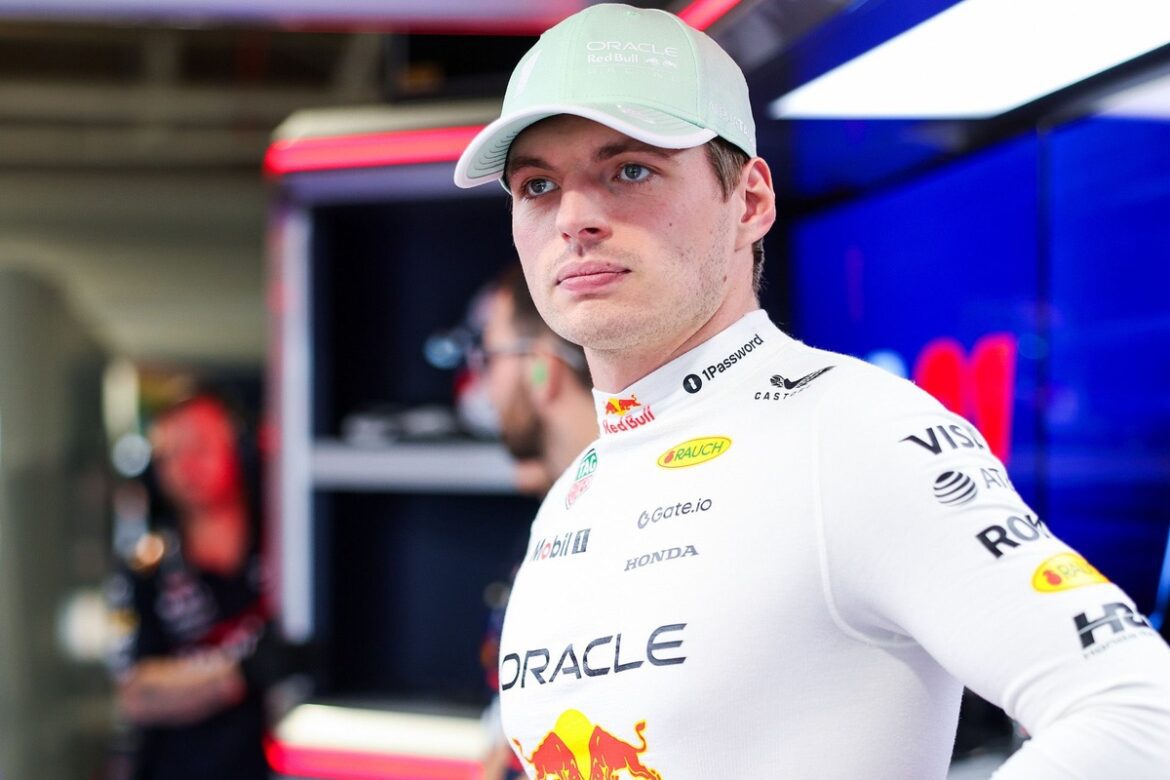Four-time Formula 1 champion Max Verstappen is bracing himself for a challenging experience during the sprint race at the Miami Grand Prix. He has expressed concerns over the anticipated high temperatures and the persistent understeer issues faced by Red Bull at lower speeds.
During the sprint qualifying session, Verstappen was the only competitor to complete two flying laps. He improved his time on the second lap at the Miami International Autodrome, surpassing George Russell, who also opted for an early lap in SQ3. Ultimately, Verstappen secured the fourth position, falling just a quarter of a second short of Andrea Kimi Antonelli’s pole time in that session. Additionally, he faced scrutiny from the stewards for allegedly not adhering to the race director’s instructions regarding minimum delta times, which resulted in a reprimand rather than a more severe penalty.
Despite these challenges, Verstappen remained optimistic about his performance. He acknowledged that the extreme heat would make things difficult, but he emphasized that it was up to him to maximize his potential under these conditions. By the time sprint qualifying commenced, the circuit temperatures had soared to 50°C, with similar conditions anticipated for Saturday’s race.
“Honestly, it’s always very challenging to predict how we will perform during a sprint weekend,” Verstappen explained. “There’s no substantial data available from long runs, as you can’t determine what other teams are doing with their fuel loads and strategies. However, based on my own experience and the balance of the car, I believe it will be tough due to the heat.”
Verstappen’s analysis of GPS data indicated that he had been on pace to improve significantly during his final lap, showing an advantage of over two-tenths of a second compared to Antonelli’s time. However, he lost that advantage by the time he reached Turn 11 and struggled to maintain traction in the slow-speed Turn 14-15-16 complex, which further affected his overall performance.
He noted that while the Red Bull car demonstrated strength in the faster sections of the track, the understeer at lower speeds was diminishing his competitiveness. “I think what we accomplished in Q3 was positive,” he added. “The tires performed well, but right from FP1, I’ve been coping with considerable understeer in the car. On this circuit, with its numerous low-speed corners, that results in a significant loss of lap time.”
Verstappen pointed out that the first sector was where the team showed notable competitiveness, attributing that to the presence of several high-speed corners. However, once they entered the lower-speed sections, he felt the car lacked grip. “P4 is acceptable, though it’s not where I aspire to be. We need to be realistic about our current limitations, and despite everything, it was still quite close.”
As fans gear up for the Miami Grand Prix, they can expect an exciting race filled with dynamic strategies and intense competition. The conditions at the Miami International Autodrome are set to play a crucial role in the outcome, particularly for drivers like Verstappen, who are navigating the challenges posed by both the track layout and the weather.
In preparation for the sprint race, teams will be closely analyzing their setups, tire strategies, and fuel loads. The ability to adapt quickly to the extreme heat will be essential, as drivers will need to find the right balance between performance and tire longevity. The Miami circuit, known for its mix of high-speed straights and technical corners, will test the limits of each team’s engineering prowess.
As the race weekend unfolds, the focus will also be on understanding the tire degradation rates under the sweltering sun. Teams will need to strategize effectively to ensure that their drivers can maintain peak performance throughout the race. With high temperatures expected to impact tire performance, the choice of tire compounds and the timing of pit stops will likely be critical factors.
Verstappen’s comments reflect a broader sentiment among drivers as they prepare for the unique challenges presented by the Miami Grand Prix. The combination of heat, track layout, and competitive pressure creates an environment ripe for unpredictability. Teams that can navigate these challenges effectively will have a significant advantage as they aim for victory.
As the excitement builds for the Miami Grand Prix, fans are eager to witness how the race will unfold. With Verstappen and other top drivers facing off in a high-stakes environment, the race promises to deliver thrilling moments and unexpected twists. The balance between speed and control will be crucial, especially in the low-speed sections where drivers will need to maximize grip to maintain their competitive edge.
The Miami Grand Prix, with its vibrant atmosphere and challenging circuit, is set to be a highlight of the Formula 1 calendar. As Verstappen and his competitors take to the track, all eyes will be on their performance under the intense Florida sun. With the added layer of a sprint race, the stakes are higher, and the competition is fiercer.
Ultimately, Verstappen’s ability to adapt to the conditions and manage his car’s limitations will be key to his success in Miami. Fans and analysts alike will be watching closely to see how he and the Red Bull team navigate the complexities of the race, aiming for the podium amidst a field of talented rivals. As the weekend progresses, the anticipation continues to build for what promises to be an unforgettable race.
